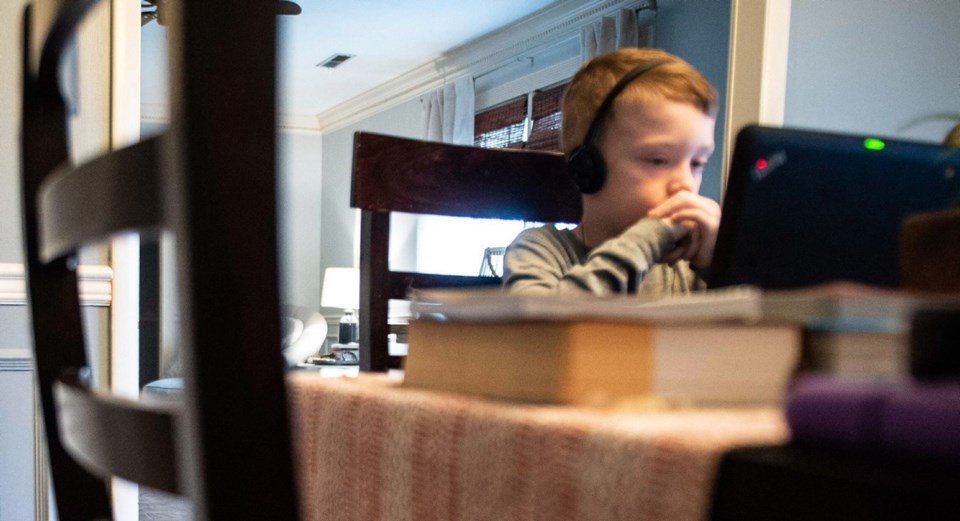As adults, we deal with uncertainty and anxiety about societal changes wrought by the COVID-19 outbreak in a number of ways, the least effective being denial that anything is wrong, that nothing has really changed.
Well, things have changed and one of the many things we don’t know is for how long.
To some extent, we adults can control our anxieties and rationalize our situation by mapping out what to do now. We have not given up control of our lives. Not yet anyway.
For kids it’s different. Accustomed to day-to-day predictability and the routine of school five days a week, they now are told that everything is inexplicably different.
The daily news says large numbers people are sick and even dying, and that the virus is spreading and the adults seem to have lost control. That and the sudden loss of routines that make daily life a safe place have been disrupted. It’s a lot to take in when you are 12 years old.
With the daily schedule of going to school, playing with friends at recess and lunchtime, coming home, more playtime suddenly put on hold there is an unsettling uncertainty. Added to that is the prospect of mom and or dad not going to work every day and those partly overheard conversations about money and there is a lot for a child to worry about.
That makes the priority helping children feel safe and not just becoming a part of all the anxiety adults are feeling.
Family life becomes a journey of improbability with no map — a puzzle with no picture on the box.
Parents, some on leave from their own regular routines, have their own questions about their child’s interrupted education: “How long will the schools be closed,” “will school work done during the mandatory school closure ‘count’ toward grades, credits or even graduation?”
Some school districts have already begun to move toward setting up online learning platforms or are providing packets of schoolwork to complete. This does not mean that parents should suddenly try to become professional teachers who know how to move from explanation to guided practice to independent practice, patiently checking for understanding all along the way.
For worried parents the temptation is to set up a daily “classroom” schedule at home and try to supervise online learning.
That, pediatric psychologists tell us, is a mistake. Kids will react differently to a parent as “teacher,” and they will push back in ways they don’t at school. Parents will have to allow for the fact that kids will be holding a lot of tension inside themselves, tension caused by all these sudden and often stressful changes to their routines and lives.
The most important caveat about temporary home schooling is that life at home simply isn’t like life at school, never was and shouldn’t try to be now.
For parents, it is important to accept that the current situation is not the same as summer break or a snow day. This is new and could be an extended period of time that none of us have ever dealt with before.
One of the biggest concerns for young children during this time is figuring out a way to replace the kind of constant social interaction that happens in school settings, which some educators call “the hidden curriculum” and which, for many kids, is the best part of school life.
So in the absence of all that and with no timetable for when normalcy might resume, the question for parents is “what to do?”
Parents can take turns reading books aloud to and, more importantly, with children. Kids should be encouraged to maintain social contacts via video or a conferencing platform, with parents keeping an eye on what transpires.
The internet is loaded with good ideas about simple projects kids and their parents can work on together.
It might seem novel to have your kids make a list of things they would like to do and learn, but there is a lot of learning to be done beyond just by sitting at a table with a book open.
It might not be the school curriculum, but it could be the restored curriculum of normal family life.
It might seem far fetched, but possibilities include math and chemistry through baking; botany through gardening; basic carpentry; or learning about space through a mobile app.
In addition to that, parents should recognize that part of the new daily schedule should include some downtime, time for kids to work on projects quietly and independently. Just as important is active time outside.
So it is a brave new world, a world that sometimes seems to be the worst of times. But, as Charles Dickens wrote, social distancing could also be “the best of times” especially for families who have accepted semi-isolation from outside dangers and, perhaps for the first time in a long time in their busy lives, have refocused inward.
Geoff Johnson is a former superintendent of schools.
- - -
To comment on this article, send a letter to the editor.
• Email: letters@timescolonist.com
• Mail: Letters to the editor, Times Colonist, 2621 Douglas St., Victoria, B.C. V8T 4M2.
Letters should be no longer than 250 words and may be edited for length, legality or clarity. Please avoid emailing your letter as an attachment.



